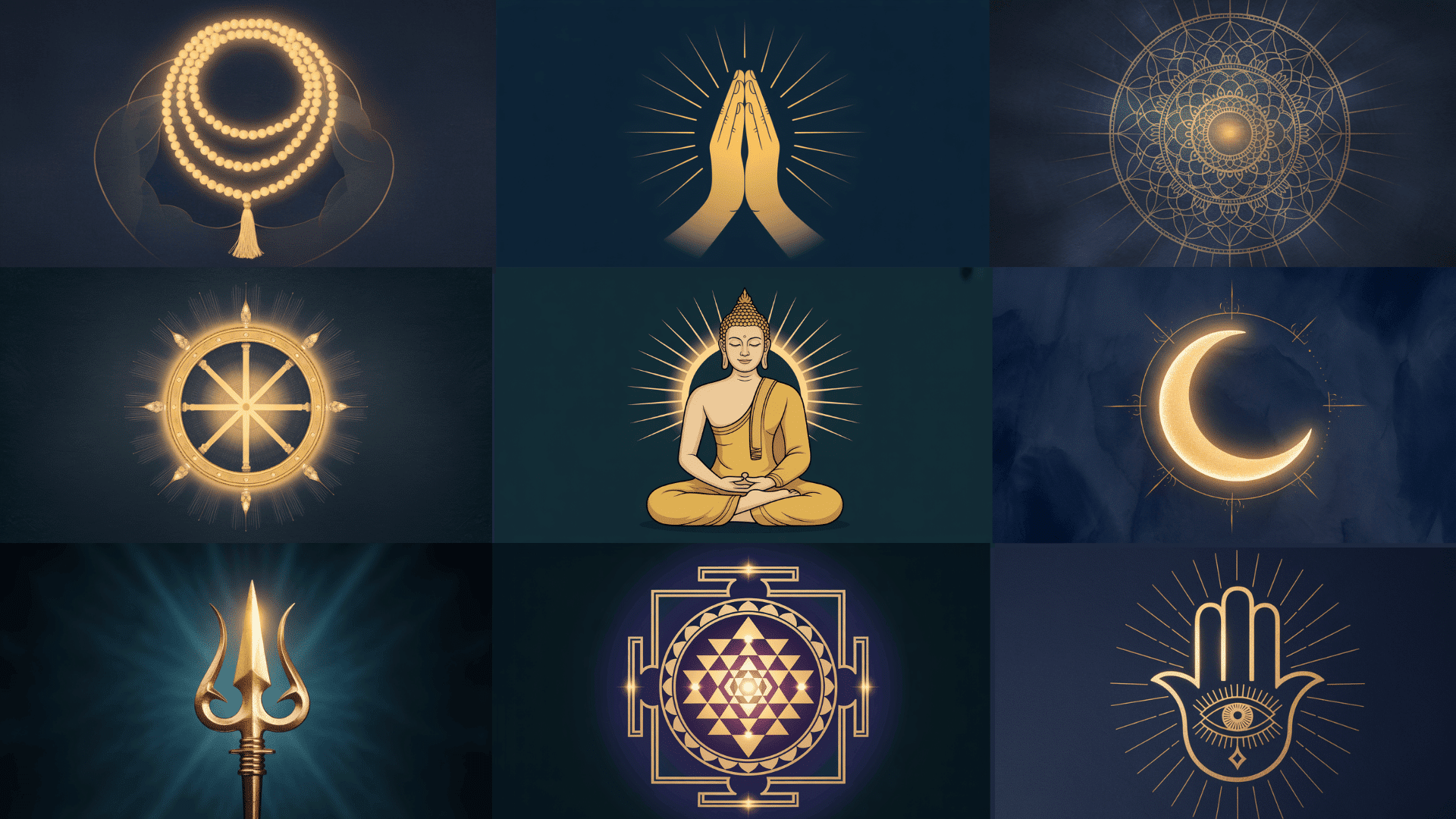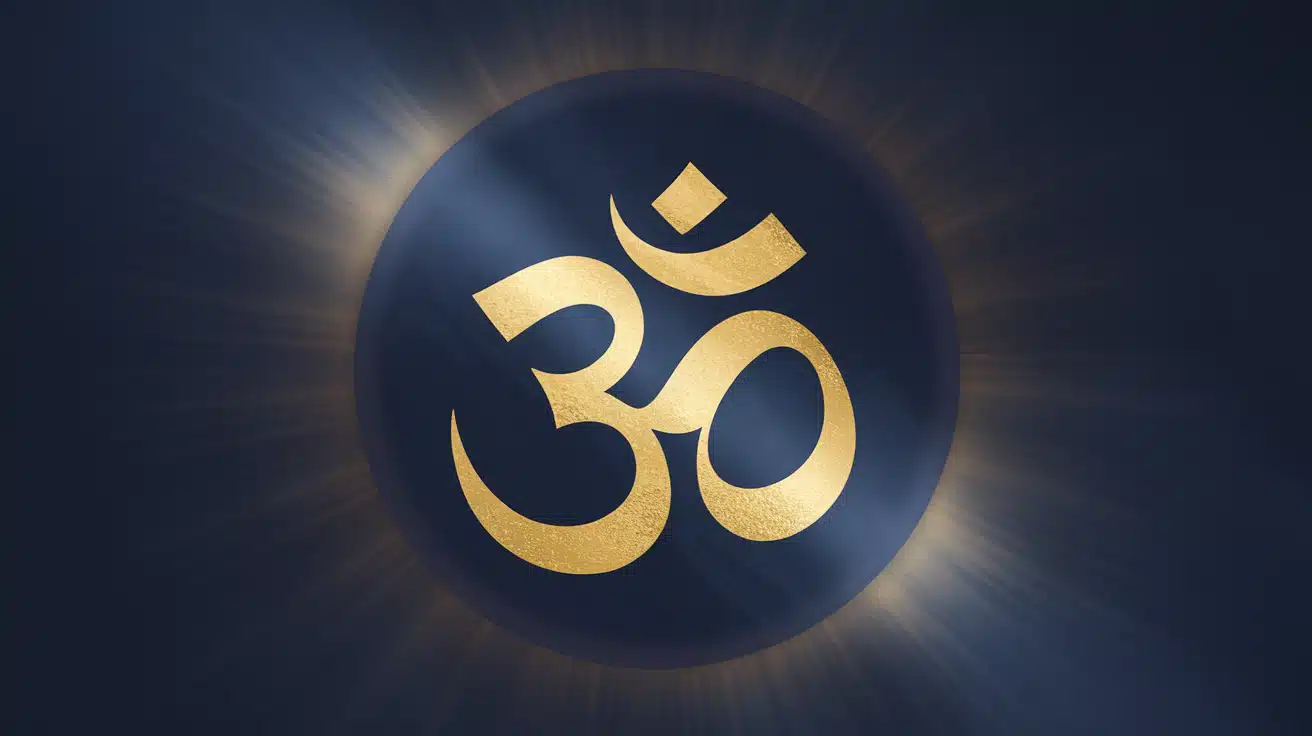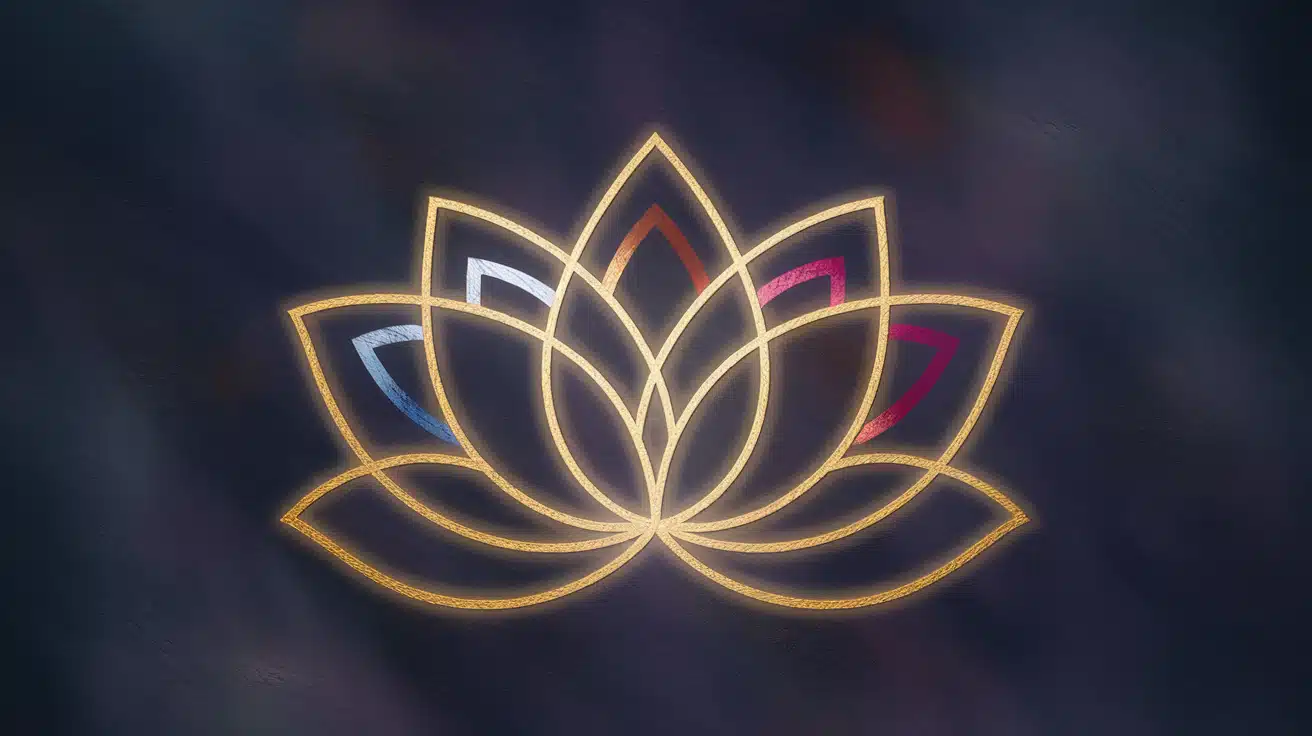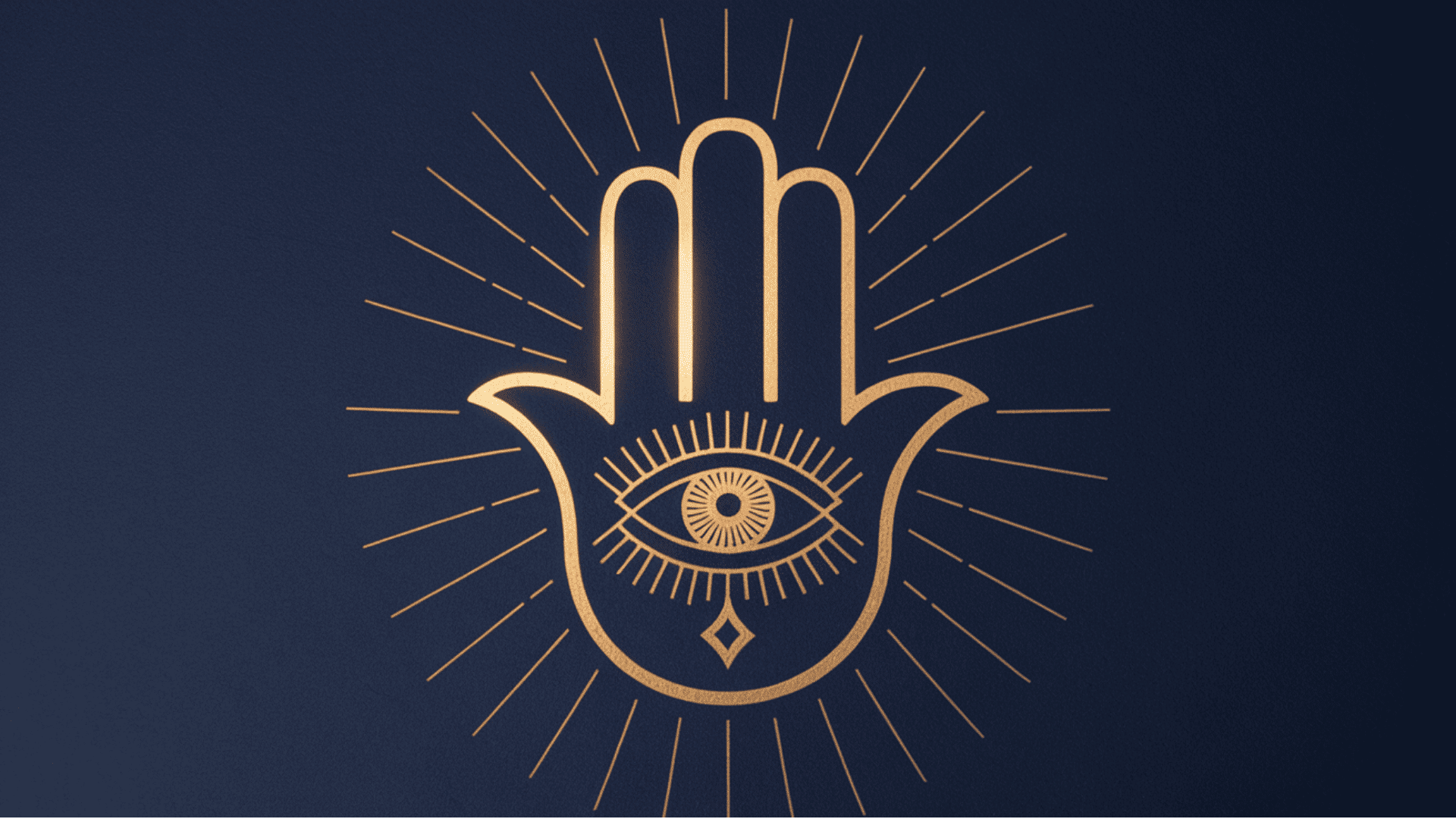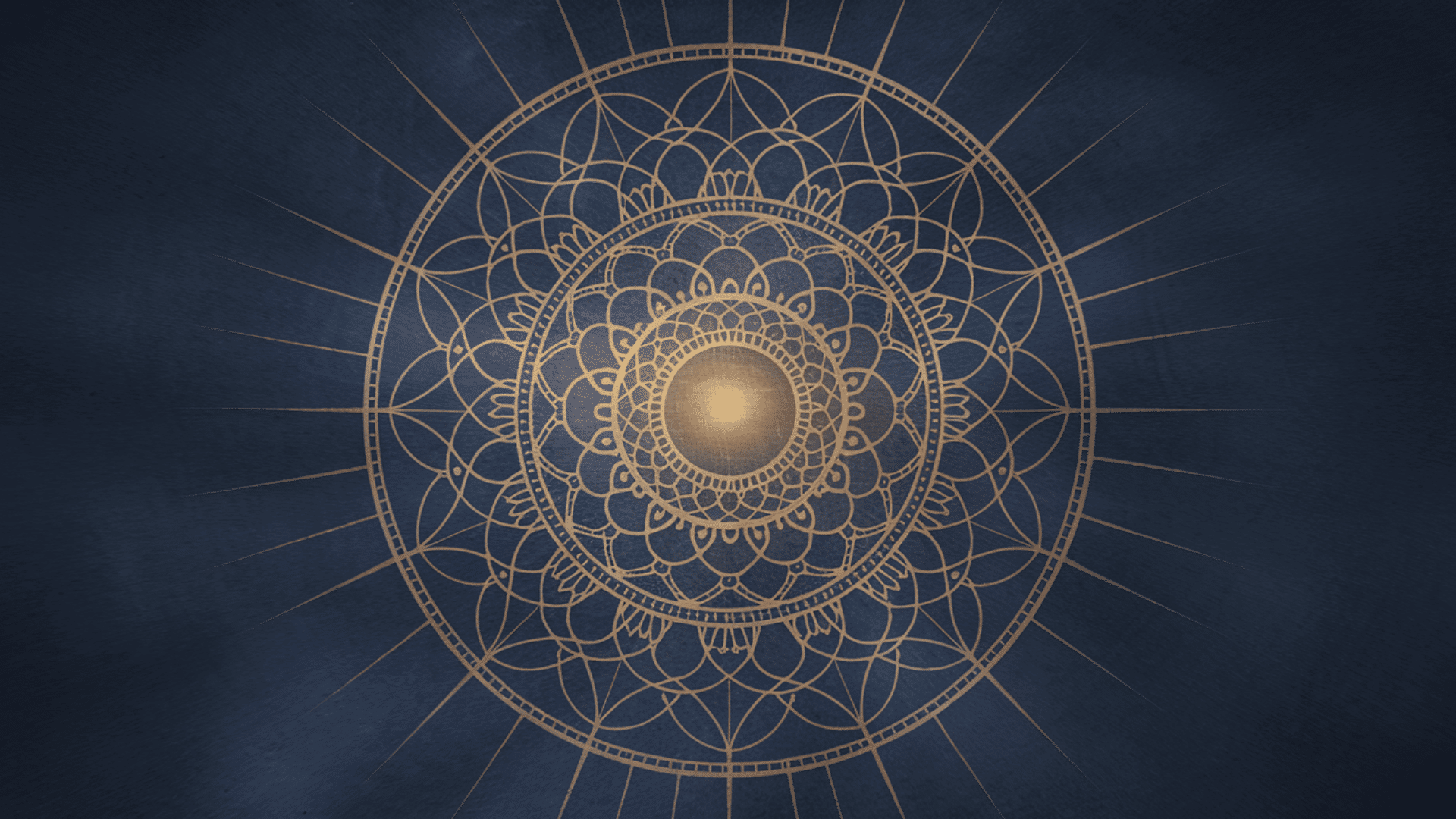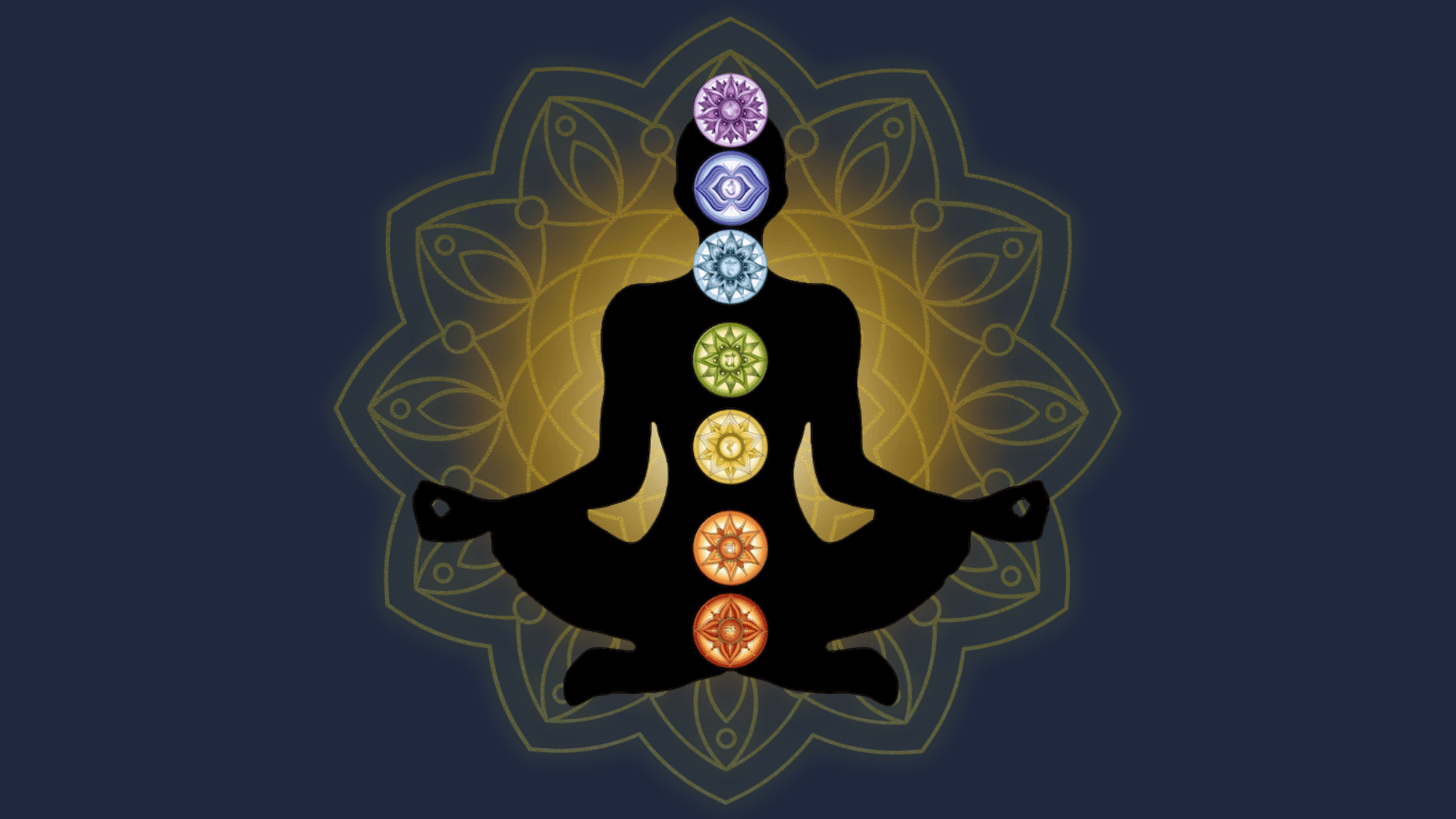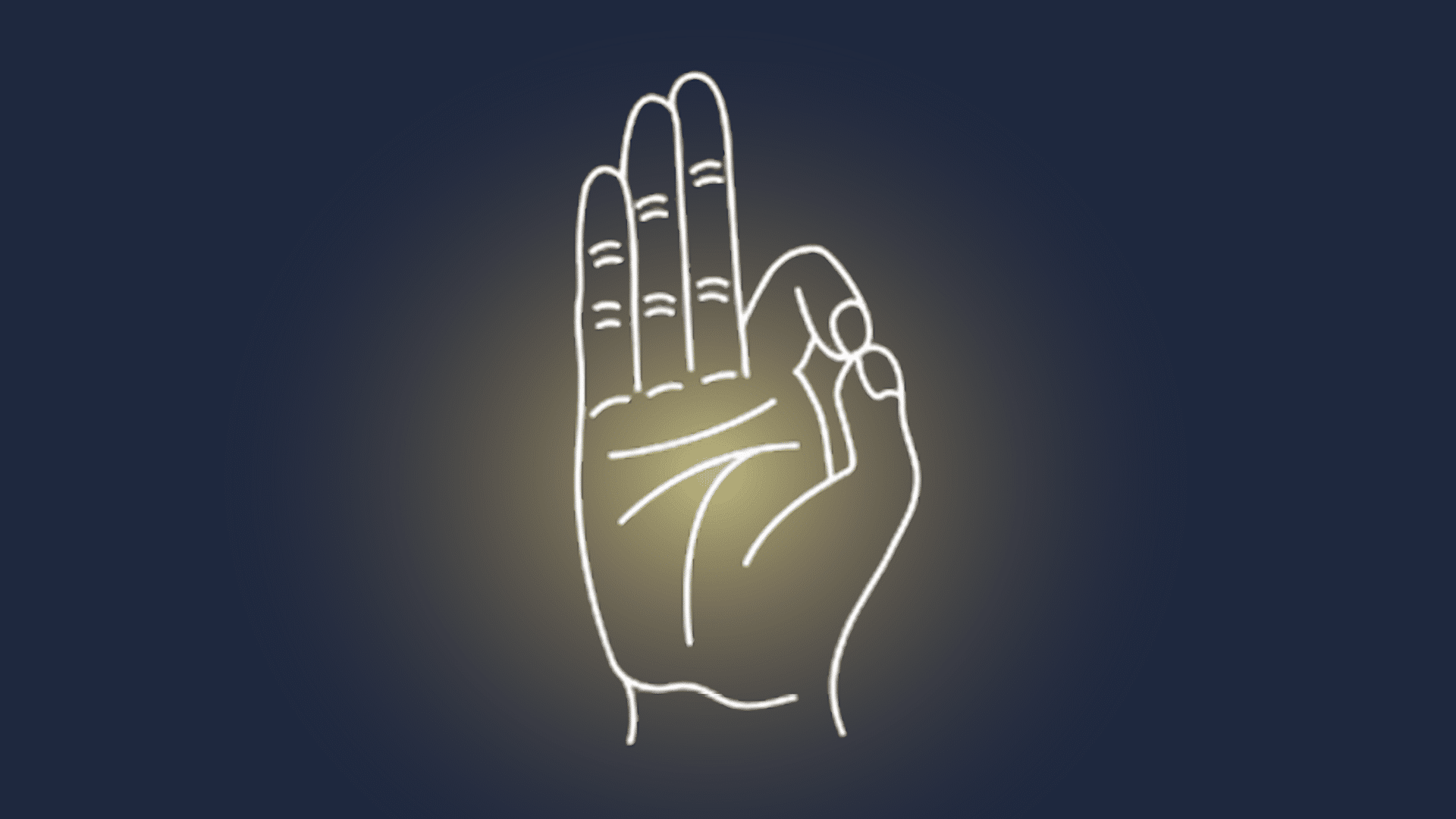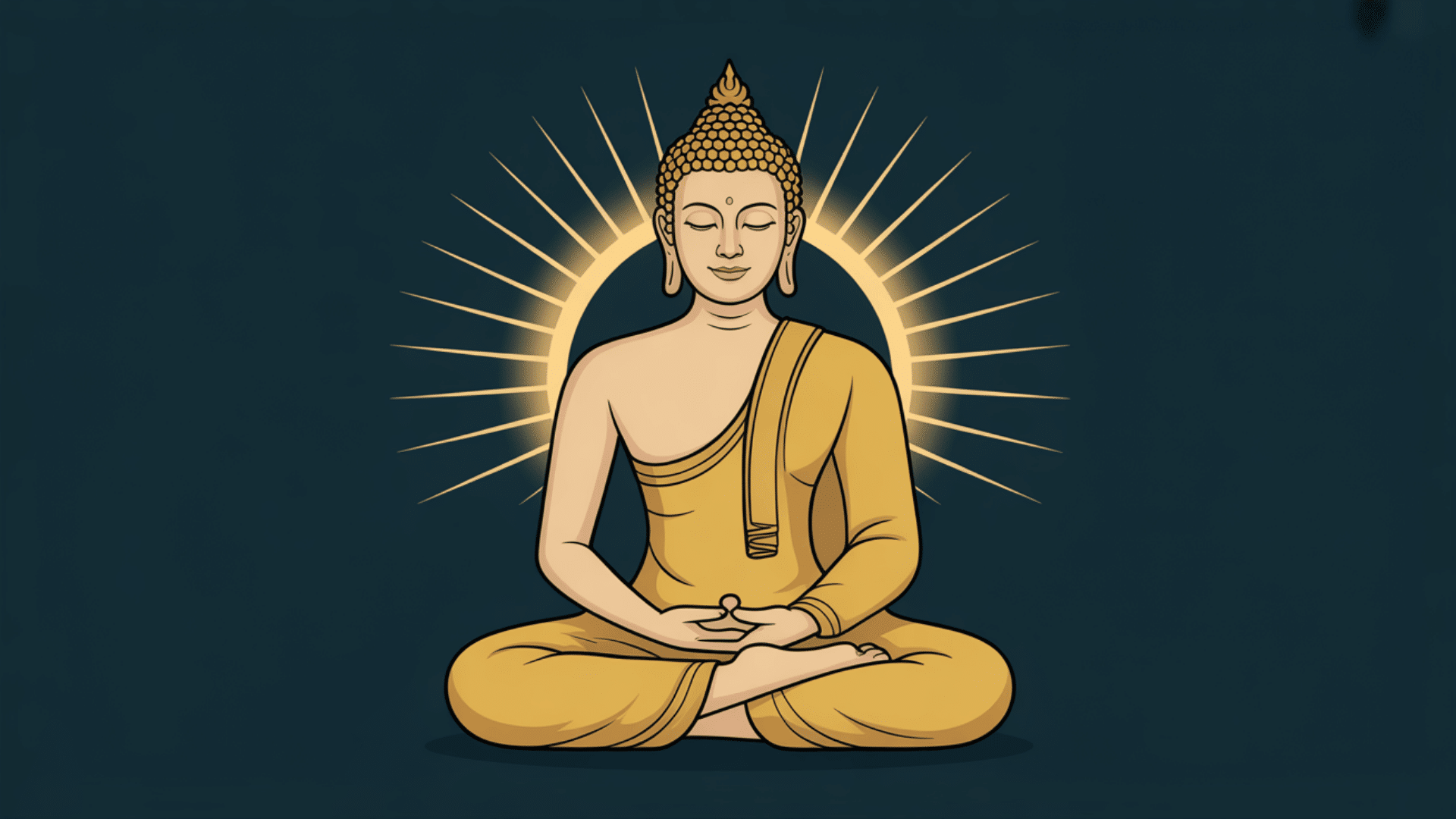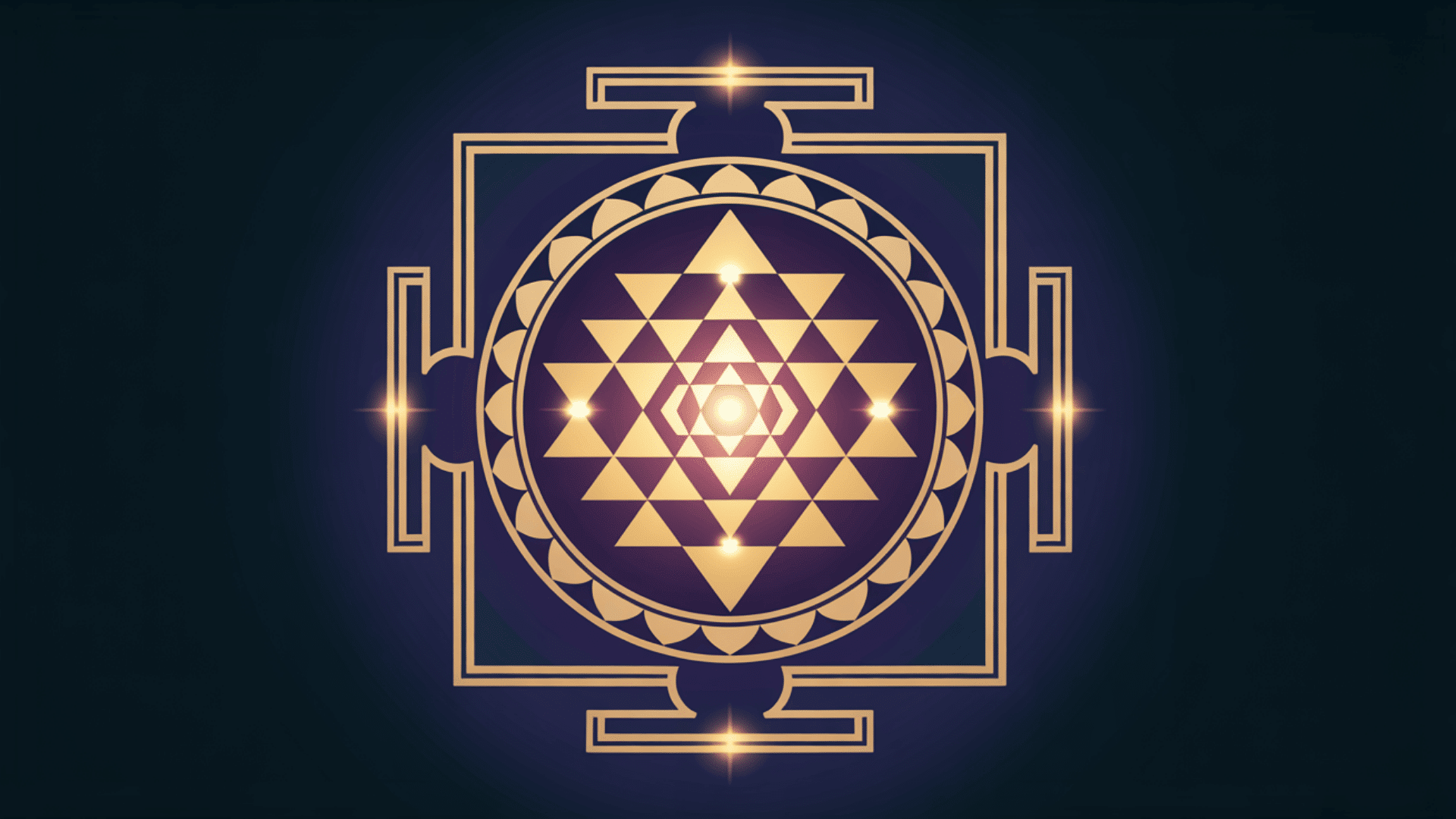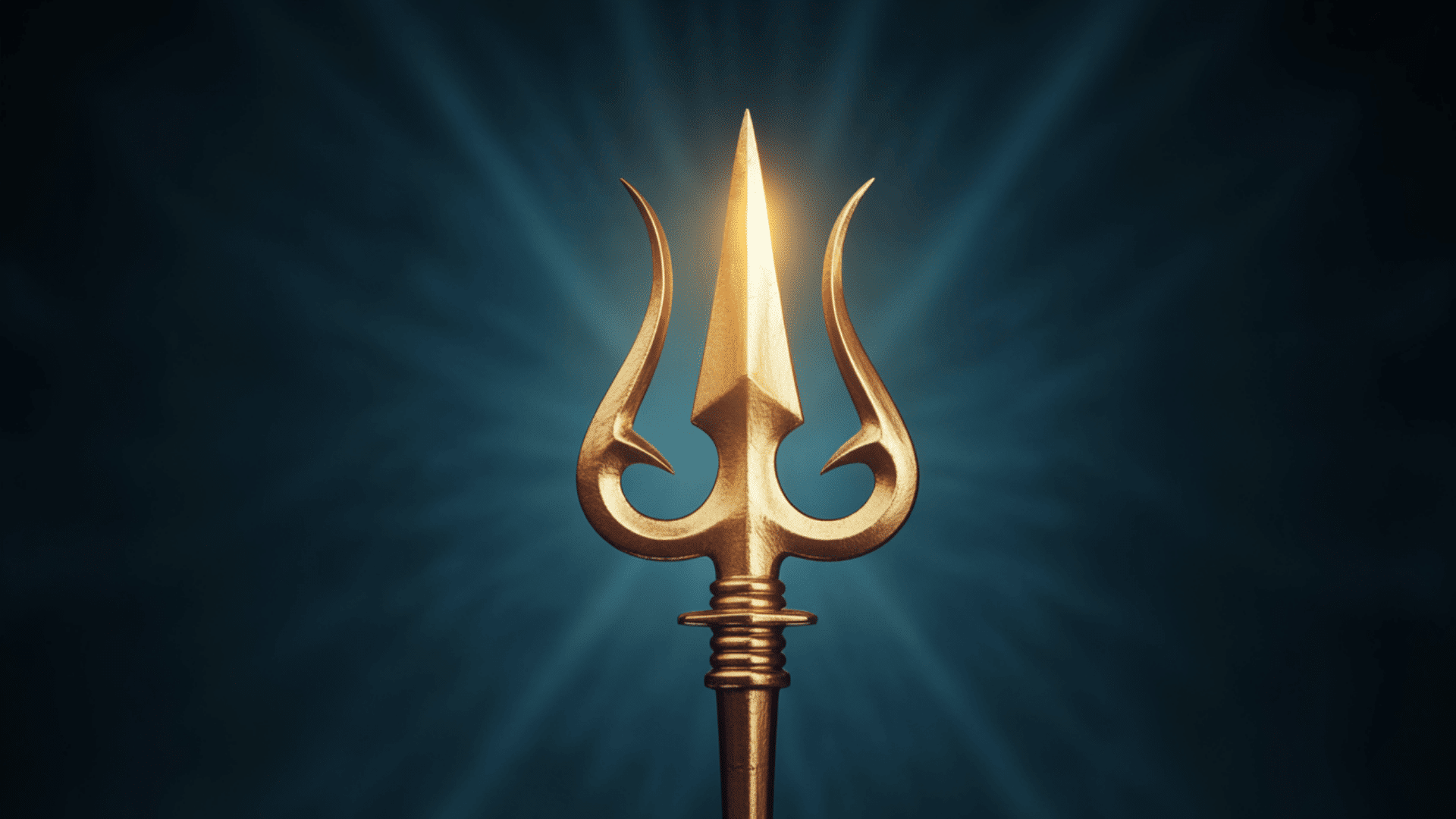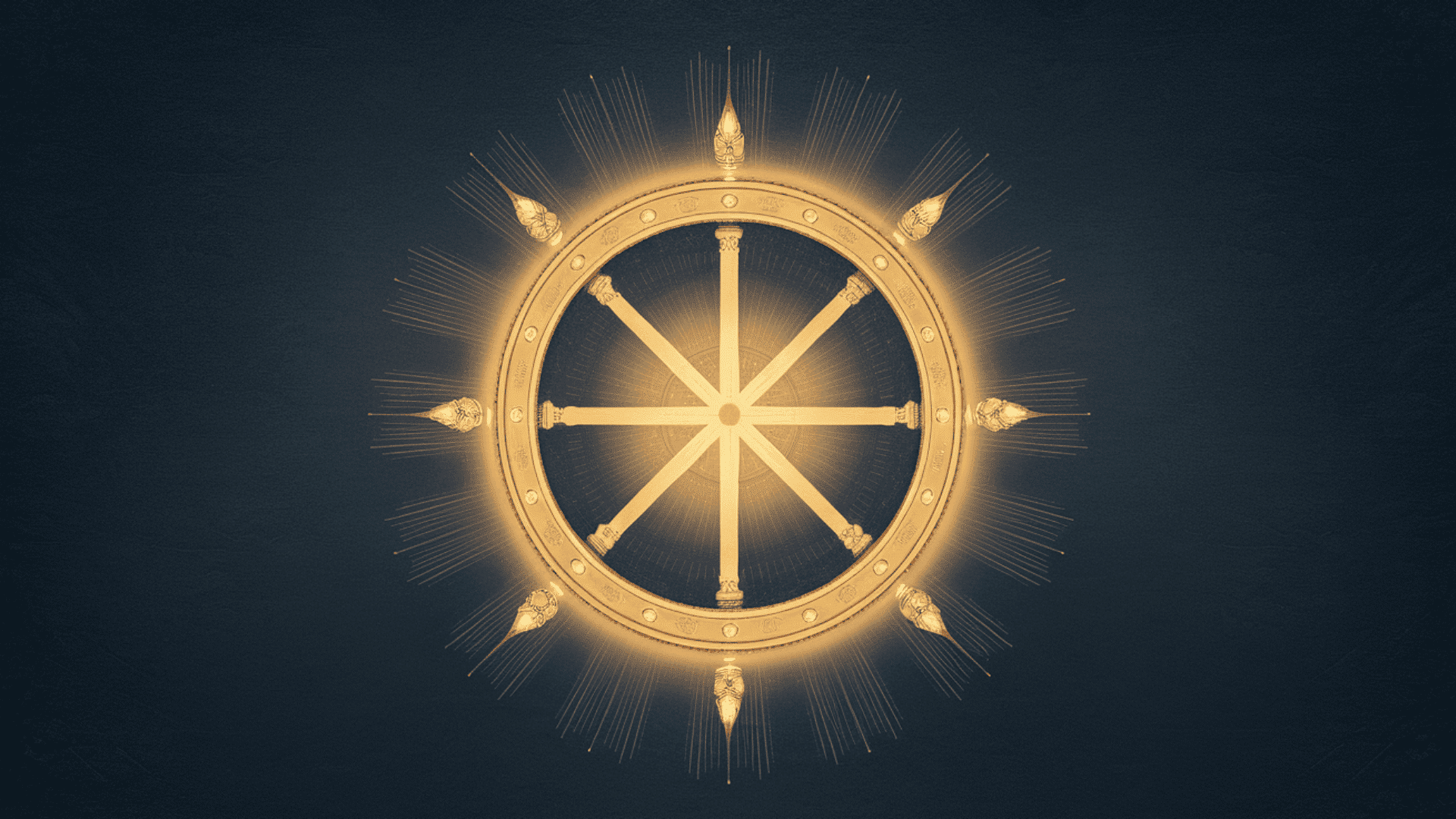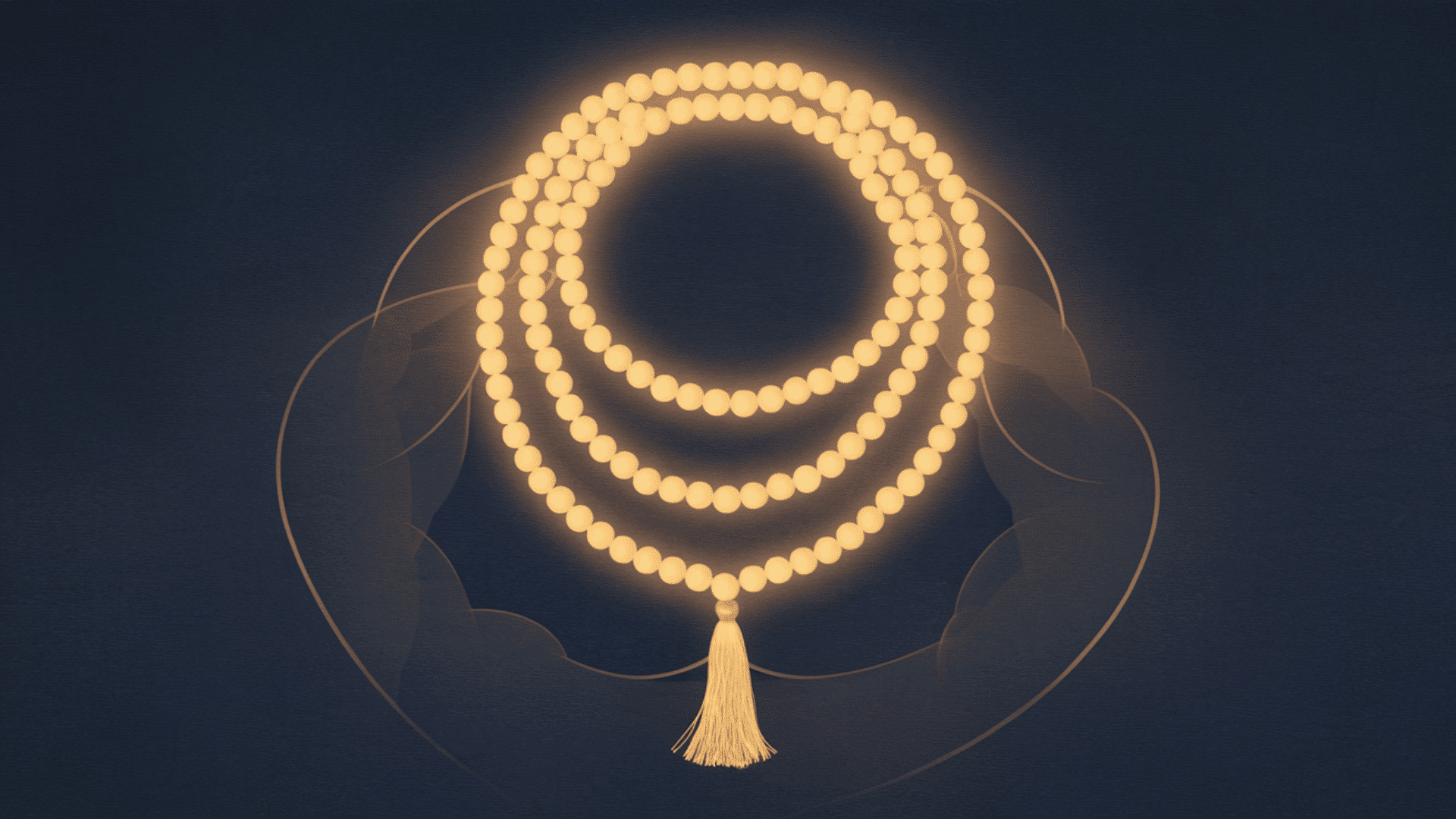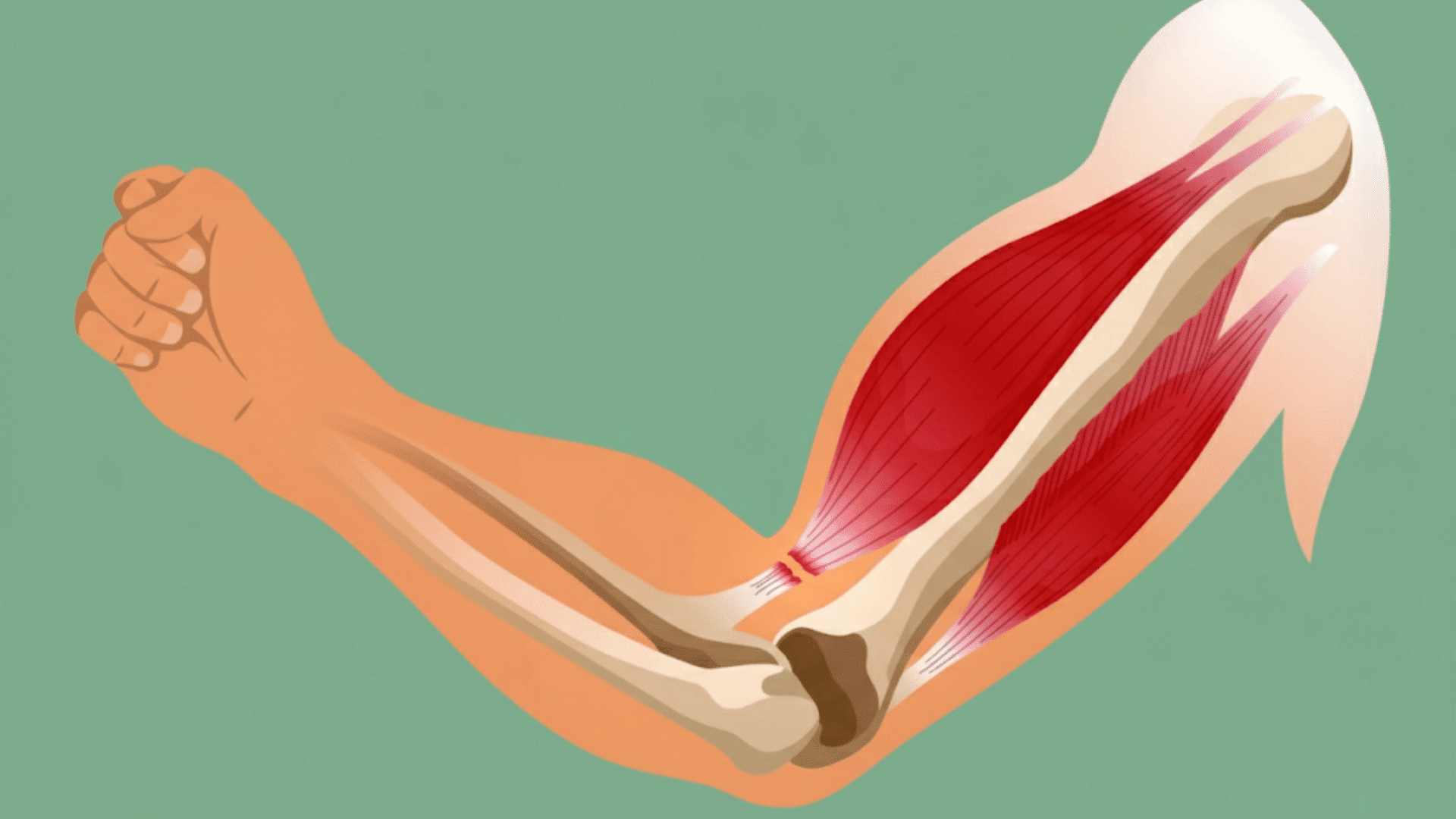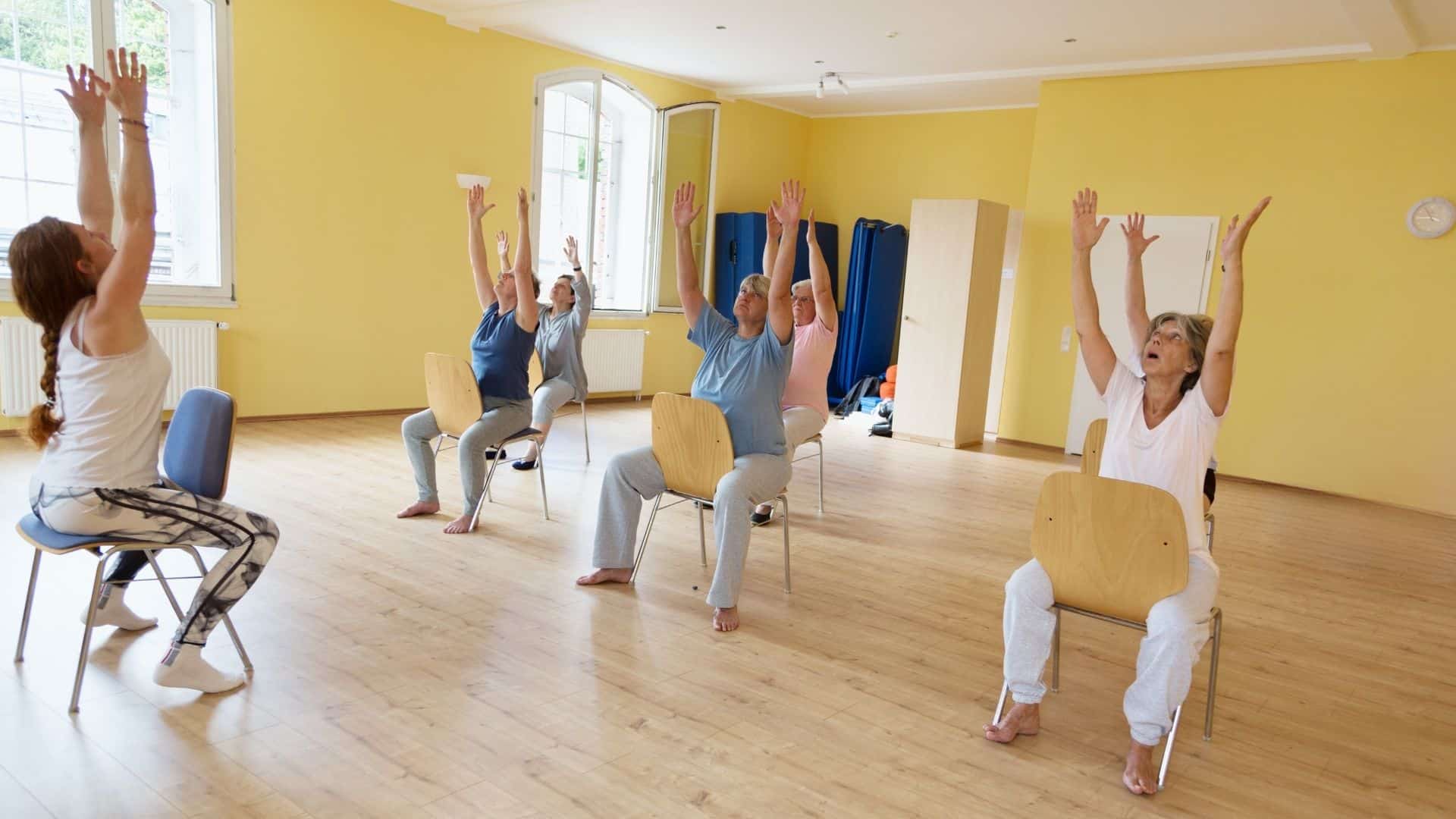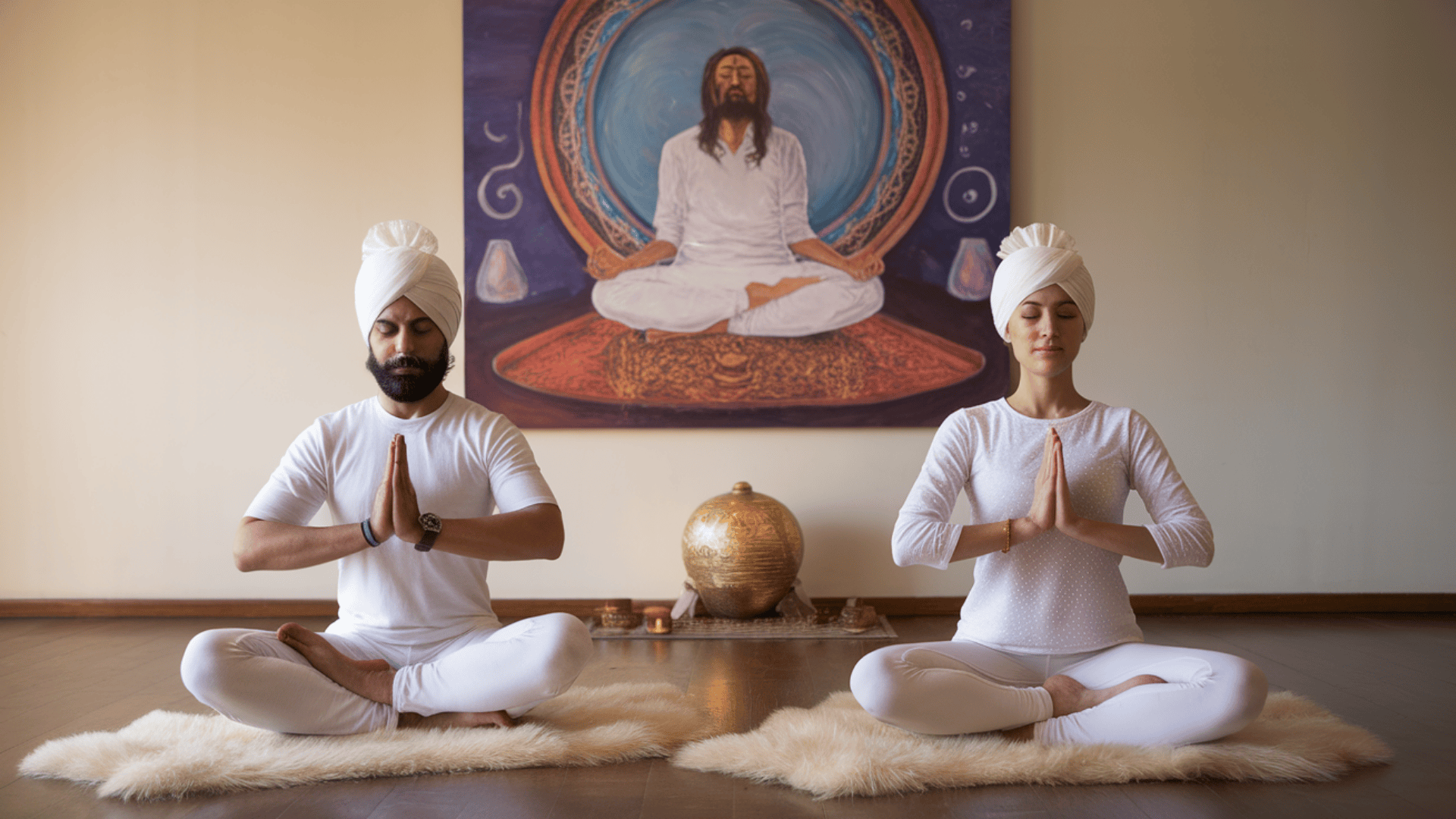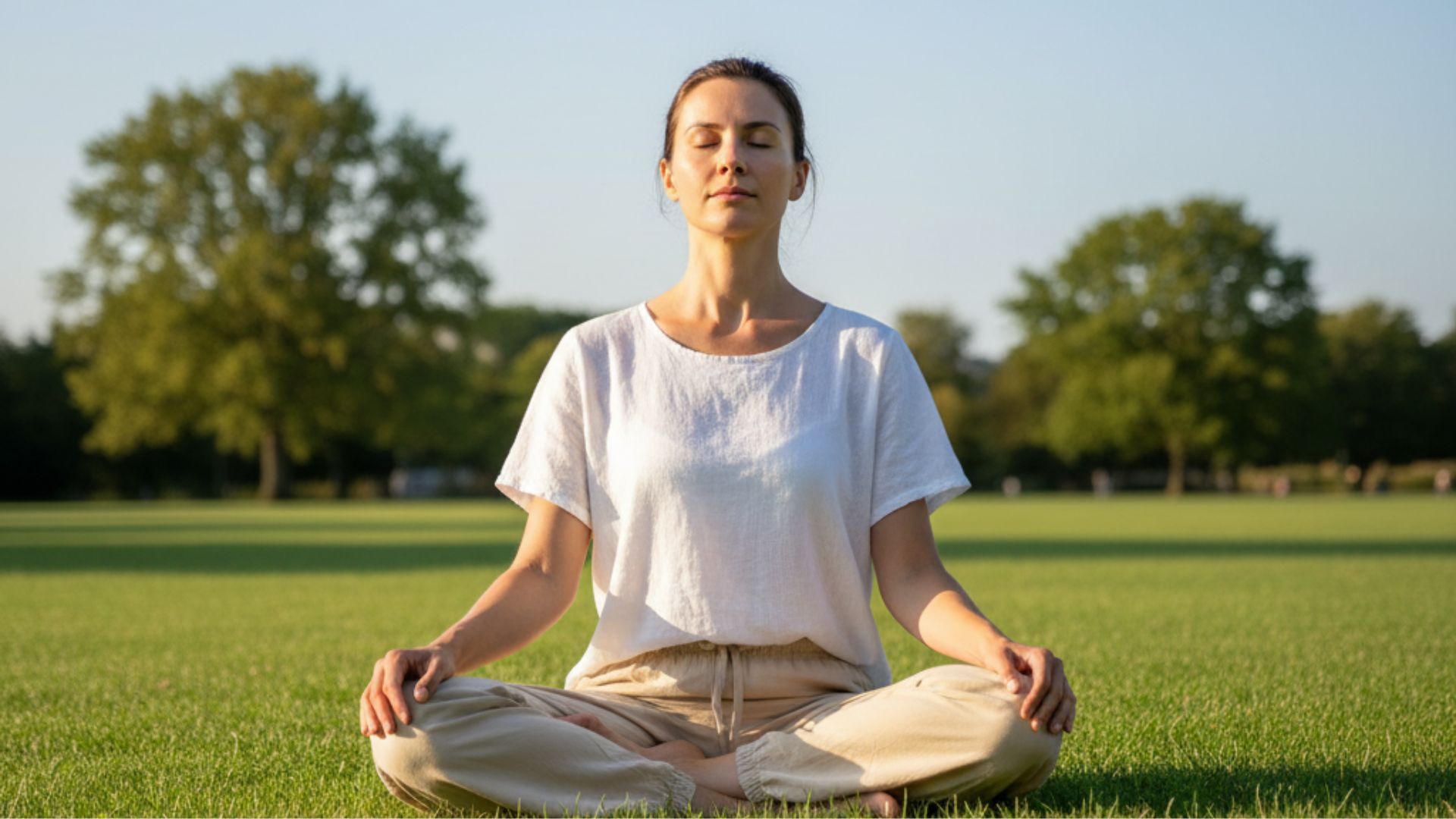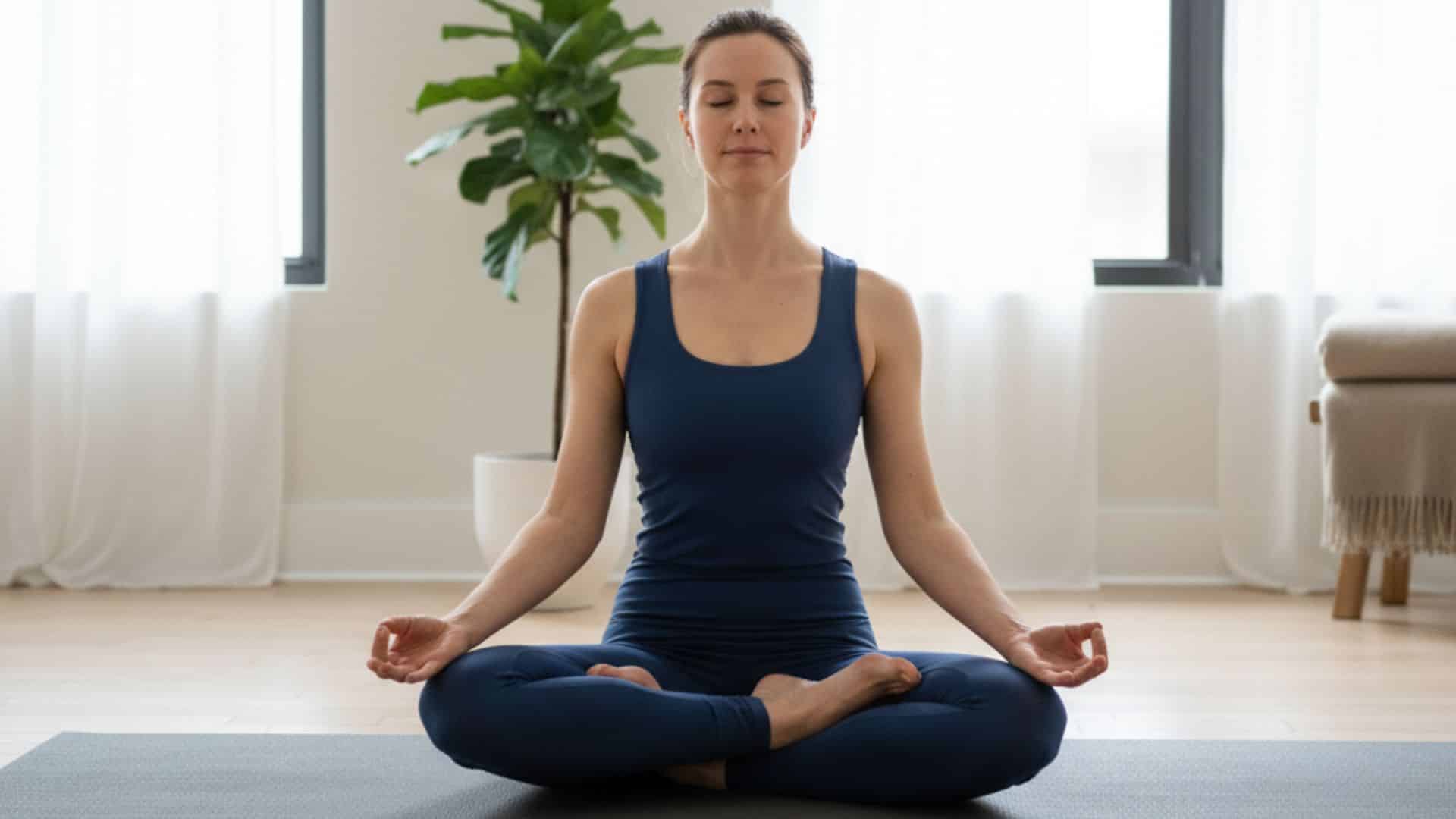You walk into a yoga studio and notice the Om symbol on the wall, lotus petals on the altar, and mandala art near the entrance. But what do these yoga symbols actually mean?
Most of us recognize the lotus or Om symbol. Yet we miss the deeper stories and spiritual weight they carry. These aren’t just pretty designs.
They’re ancient tools that connect breath, intention, and energy in ways that can shift your practice.
You’re about to know the real meanings behind these symbols. You’ll learn where they come from, why they matter, and how to use them with respect.
From the Om glyph to mala beads, each one holds layers of wisdom that go beyond the mat.
How to Understand Yoga Symbols?
Yoga symbols speak in three languages at once. Shape, sound, and gesture.
Circles show cycles and completeness. Petals mark stages of opening. Triangles direct energy flow upward toward the spirit and downward toward the earth. Seed syllables in Sanskrit carry specific vibrations when spoken or held in the mind.
But symbols aren’t always visual.
Some exist as mantras, sacred sounds you repeat during meditation. Others live in mudras, hand positions that shift the energy inside your body.
Press your thumb to your index finger and you’ve formed a symbol that calms the nervous system.
You’ll find these markers on mala beads, studio walls, and jewelry. Some appear in art. Others guide meditation practices.
The key is knowing what you’re working with and why it matters
13 Yoga Symbols and Their Meanings
Now that you know how to read these symbols, let’s look at what each one actually means. Some you’ll recognize right away. Others might be new. Each carries its own story and purpose in practice.
1. Om / Aum
The Om symbol combines sound and image. The curve represents waking, dreaming, and deep sleep states. The dot above shows pure consciousness.
When you chant Om, the sound starts in your belly, moves through your chest, and ends at your lips. Three syllables, A-U-M, merge into one.
Significance: Om opens and closes most yoga practices. It sets intention and reminds you that everything is connected.
2. Lotus Flower
The lotus grows in mud but blooms clean above the water. Each color carries a different meaning.
White shows purity. Pink signals devotion. Red points to love. Blue represents wisdom.
Significance: This symbol reminds you that struggles don’t define you. You can rise through difficult times and still come out whole. It appears often in chakra work, especially for the crown and heart centers.
3. Hamsa Hand
Five fingers spread wide, with an eye in the palm. This symbol appears across Hindu, Buddhist, Jewish, and Islamic traditions.
The eye watches for negative energy. The hand offers protection and blessing.
Significance: Yogis use it as a shield against distraction. You’ll see it on jewelry, studio doors, and meditation spaces to set protective intention.
4. Mandala
Concentric circles and geometric patterns radiate from a center point. The outer edge represents the material world.
Inner rings show stages of consciousness. The center is pure awareness.
Significance: Staring at a mandala during meditation helps quiet the mind. Your eyes follow the patterns inward, and your thoughts follow. It’s a tool for concentration.
5. Chakras
Seven energy centers run from the base of your spine to the crown of your head:
- Root (red): Grounding and survival
- Sacral (orange): Creativity and emotion
- Solar plexus (yellow): Power and confidence
- Heart (green): Love and connection
- Throat (blue): Communication and truth
- Third eye (indigo): Intuition and insight
- Crown (violet/white): Spiritual connection
Significance: Yoga poses target specific chakras. Warrior poses activate your root and solar plexus. Heart openers work on the chest center. When you understand the system, you can design practices that address what you need.
6. Gyan Mudra / Chin Mudra
Touch your thumb tip to your index fingertip. The other three fingers extend. The thumb represents universal consciousness.
The index finger is individual self. When they touch, you symbolize the union of both.
Significance: This mudra calms your nervous system and helps you focus during breathwork or meditation. The contact point creates a subtle energy loop that keeps awareness inward.
7. Anjali Mudra (Namaste)
Palms press together at the heart center. This gesture appears at the start and end of most yoga classes.
The word “Namaste” translates to “the light in me honors the light in you.”
Significance: This mudra creates balance. Right and left, logic and intuition, active and receptive, all meet at the heart. You can use it anytime you need to center yourself.
8. Buddha Image
The Buddha sits in meditation, eyes half-closed, hands in mudra. He represents the potential for awakening that exists in everyone.
His image is a reminder of compassion, patience, mindfulness, and commitment to inner work.
Significance: Many studios place Buddha statues near the entrance or on altars. They set a tone of calm and introspection. The symbol bridges Buddhist meditation and yoga philosophy.
9. Shri Yantra
Nine interlocking triangles surround a central dot (bindu). Four triangles point up, representing masculine energy.
Five point down, showing feminine energy. They sit inside lotus petals and a square frame.
Significance: Meditating on the Shri Yantra aligns your inner energy with universal energy. Your eyes trace the triangles inward toward the bindu. It’s used in advanced meditation and Tantra practices.
10. Trishula (Trident)
Three prongs rise from a single shaft. This is the symbol of Shiva, the god of transformation.
The three prongs represent past, present, and future. They also symbolize creation, preservation, and destruction.
Significance: The trishula reminds you that change is constant. In yoga philosophy, this connects to letting go, releasing old patterns, beliefs, or physical tension.
11. Crescent Moon
A slim curve, often shown near a deity’s head or throat. The moon represents time, cycles, and the mind’s fluctuations.
In yoga, the moon is cooling energy that balances the sun’s heat.
Significance: Moon symbols remind you to honor rest as much as effort. Some practitioners align their practice with moon phases, building intensity toward the full moon, softening toward the new moon.
12. Dharma Wheel
Eight spokes radiate from a center hub. This Buddhist symbol represents the Eightfold Path, a guide to ethical living and mental clarity.
The spokes cover right view, intention, speech, action, livelihood, effort, mindfulness, and concentration.
Significance: The wheel reminds you that yoga isn’t just about poses. It’s about how you live off the mat. Right speech means talking with kindness. Right mindfulness means staying present.
13. Mala Beads & 108
A mala is a string of 108 beads plus one larger guru bead. You use it to count repetitions of a mantra during meditation.
The number 108 appears throughout yogic tradition, 108 Upanishads, 108 sacred sites in India, 108 energy lines converging at the heart chakra.
Significance: Using a mala keeps your hands busy and your mind focused. You hold one bead, repeat your mantra, then move to the next. This practice, called japa meditation, builds concentration and deepens your connection to the mantra’s meaning.
Integrating Symbols Into Your Yoga Practice
You don’t need to use all these symbols at once. Start small and let them grow into your practice naturally.
| Action | How to Do It |
|---|---|
| Choose one symbol | Pick what speaks to you right now. Need grounding? Focus on the root chakra. Want calm? Work with the crescent moon or a mandala. |
| Add to meditation space | Place an image where you’ll see it before practice. Let it set your intention for the session. |
| Use mudras during breathwork | Gyan mudra takes two seconds to form. Hold it while you breathe and notice how it shifts your focus inward. |
| Chant with your mala | Pick a simple phrase like “Om” or “So Hum.” Move through the beads slowly. Let the repetition settle your mind. |
| Study one at a time | Spend a week with the lotus. Notice where it shows up in your life. Reflect on what rising above difficulty means to you right now. |
What matters is showing up regularly, not doing it perfectly. Even small, repeated actions build a stronger connection to the symbol’s energy and meaning.
Respectful Use and Cultural Context of Yoga Symbols
These symbols come from Hinduism and Buddhism, traditions with thousands of years of history. Om appears in ancient Vedic texts.
The lotus grows in temple ponds across India. These aren’t abstract images. They’re sacred to millions who use them daily in worship.
- Knowing the source tradition: Om is considered the vibration of the universe in Hindu philosophy. Shiva’s trishula belongs to a living deity worshipped today. Know where your symbols come from before you use them.
- Tattoos and jewelry choices: Ask yourself, have you researched what they mean? Do you practice with it? A symbol without understanding can feel hollow.
- Symbols in studio spaces and homes: Buddha statues aren’t props or decor. If you display sacred symbols, treat them with the same care that practitioners in their home traditions would.
- Learning before using: Read about the symbol’s history. If you’re unsure whether something is appropriate, pause and ask someone from that tradition.
When you use symbols with genuine care, they deepen your practice. Used carelessly, they risk reducing sacred traditions to style.
The Bottom Line
Yoga symbols aren’t just beautiful images. They’re invitations to go deeper. Each one asks you to slow down, look more closely, and connect your practice to something bigger than just a workout.
Start with one. Study it. Use it in meditation or breathwork. Notice what shifts when you work with intention instead of just going through the motions.
The symbols that stick with you will be the ones that meet you where you are. Maybe it’s the lotus reminding you to rise.
Maybe it’s the dharma wheel asking how you live off the mat. Let them guide you, not decorate you.
Want evidence-based tips to keep your body feeling its best? Dig into our Recovery & Wellness library.

